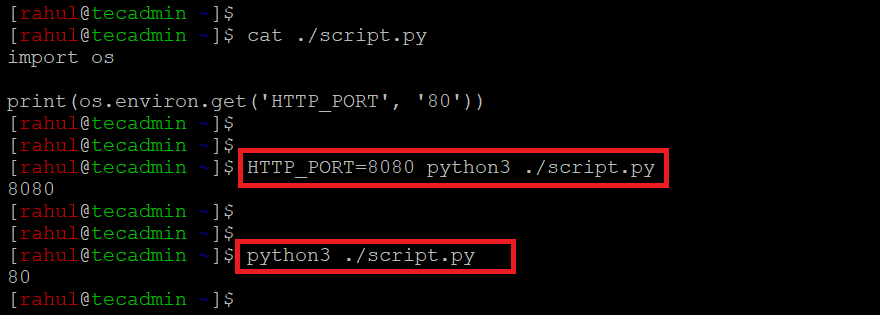Environment variables are a crucial aspect of any programming environment. They store configuration settings, system paths, and other essential data that applications rely on. As a Python developer, understanding how to access and manage these variables is vital to creating robust, adaptable, and maintainable applications. In this comprehensive guide, we will explore the ins and outs of environment variables in Python, from accessing and setting them to handling best practices and potential pitfalls.
Table of Contents
- What are Environment Variables?
- Accessing Environment Variables in Python
- Setting and Modifying Environment Variables
- Storing Sensitive Information Securely
- Using Environment Variables with Configuration Files
- Best Practices and Common Pitfalls
- Conclusion
1. What are Environment Variables?
Environment variables are key-value pairs that are stored in the operating system’s environment. They store essential information used by various programs, such as file paths, API keys, and configuration settings. By leveraging these variables, developers can create applications that adapt to different environments and configurations easily.
2. Accessing Environment Variables in Python
Python provides the os module to interact with the operating system, including accessing environment variables. The `os.environ` object is a dictionary-like mapping of environment variables. You can access its values like you would with a standard Python dictionary:
1 2 3 4 | import os print(os.environ['PATH']) print(os.environ.get('NON_EXISTENT_VARIABLE', 'Default Value')) |
In the first example, we directly access the PATH variable. If the variable does not exist, a KeyError will be raised. The second example uses the `get()` method, which returns a default value if the variable is not found.
For example:
1 2 3 | import os print(os.environ.get('HTTP_PORT', '80')) |
If the HTTP_PORT environment variable is not set, the default value ’80’ will be returned. Lets run the above script with and without environment variable settings and see the differences:

3. Setting and Modifying Environment Variables
You can set or modify environment variables using the os.environ object. Keep in mind that these changes will only persist for the duration of the Python script or session:
1 2 3 4 5 6 7 8 9 | import os os.environ['MY_VARIABLE'] = 'My Value' print(os.environ['MY_VARIABLE']) os.environ['MY_VARIABLE'] = 'New Value' print(os.environ['MY_VARIABLE']) del os.environ['MY_VARIABLE'] |
4. Storing Sensitive Information Securely
Sensitive information, such as API keys and database credentials, should not be hardcoded into your application. Instead, store them as environment variables to keep them secure and allow for easy updates. Python’s os.environ object can access these values when needed.
5. Using Environment Variables with Configuration Files
To further improve organization and maintainability, you can use configuration files (like .env, .ini, or .yaml) to store environment variables. Python libraries like python-dotenv, configparser, and PyYAML can read these files and load the variables into the `os.environ` object.
6. Best Practices and Common Pitfalls
- Avoid hardcoding sensitive information in your application. Use environment variables instead.
- Use a configuration file to store environment variables, making it easier to manage and update.
- Remember that changes to os.environ persist only for the duration of the Python script or session. Use system tools or scripts to set variables permanently.
- Validate and sanitize user input to avoid security risks when working with environment variables.
Conclusion
Understanding how to access and manage environment variables in Python is essential for creating flexible and maintainable applications. By following best practices and using the right tools, you can ensure that your application remains secure, adaptable, and easy to configure.
